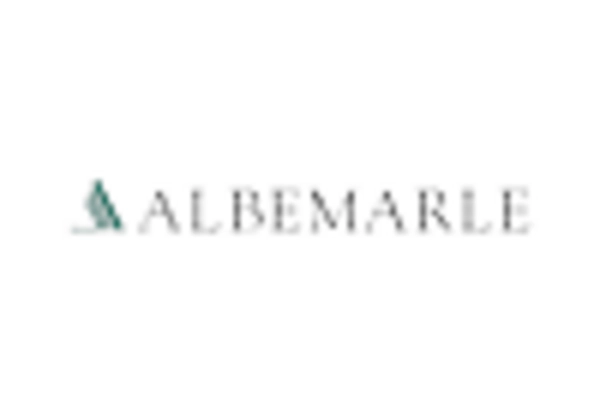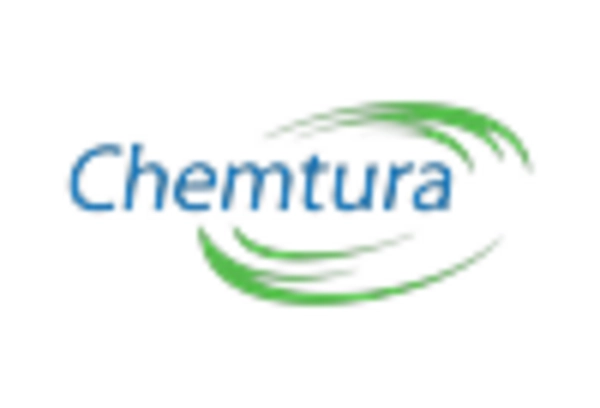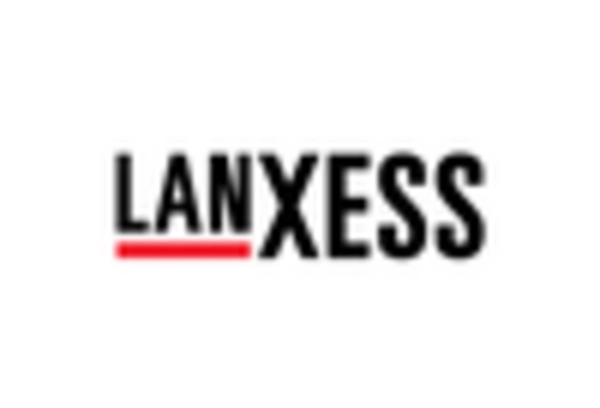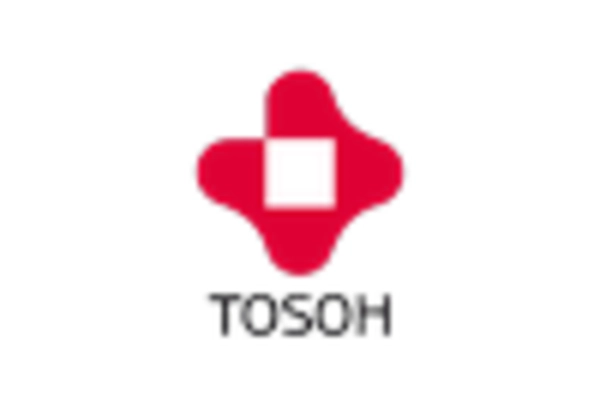Market Growth Projections
The Global Decabromodiphenyl Ether Market Industry is projected to experience substantial growth over the next decade. With a market value anticipated to reach 2.09 USD Billion by 2035, the industry is on a positive trajectory. The compound's effectiveness as a flame retardant and its compliance with safety regulations contribute to this optimistic outlook. Additionally, the market is expected to witness a compound annual growth rate of 3.37% from 2025 to 2035, indicating a steady increase in demand. This growth is likely to be driven by ongoing innovations and the expanding applications of decabromodiphenyl ether across various sectors.
Diverse Applications Across Industries
The versatility of decabromodiphenyl ether across diverse applications fuels the growth of the Global Decabromodiphenyl Ether Market Industry. This compound is utilized in various sectors, including electronics, textiles, and automotive, owing to its effective flame-retardant properties. In the electronics industry, for instance, decabromodiphenyl ether is integral to manufacturing circuit boards and other components that require fire resistance. The expanding applications in different sectors are likely to sustain market momentum, as manufacturers seek reliable solutions to meet safety standards. This broad applicability reinforces the market's potential for growth in the coming years.
Increasing Demand for Flame Retardants
The Global Decabromodiphenyl Ether Market Industry experiences a notable surge in demand for flame retardants across various sectors, particularly in electronics and textiles. As safety regulations become more stringent, manufacturers are compelled to incorporate effective flame retardant solutions in their products. For instance, the electronics sector, which is projected to grow significantly, relies heavily on decabromodiphenyl ether for its fire-resistant properties. This trend is expected to contribute to the market's growth, with projections indicating a market value of 1.45 USD Billion in 2024, reflecting a growing awareness of fire safety standards globally.
Technological Advancements in Production
Technological advancements in the production of decabromodiphenyl ether are poised to enhance the efficiency and sustainability of the Global Decabromodiphenyl Ether Market Industry. Innovations in manufacturing processes are leading to reduced production costs and improved product quality. For instance, the adoption of green chemistry principles in the synthesis of decabromodiphenyl ether may minimize environmental impact while maintaining performance standards. These advancements not only cater to the growing demand for eco-friendly solutions but also position manufacturers competitively in the market. As a result, the industry is expected to witness a compound annual growth rate of 3.37% from 2025 to 2035.
Regulatory Support for Fire Safety Standards
The Global Decabromodiphenyl Ether Market Industry benefits from increasing regulatory support aimed at enhancing fire safety standards. Governments worldwide are implementing stringent regulations that mandate the use of flame retardants in various applications, including construction materials and consumer goods. This regulatory landscape encourages manufacturers to adopt decabromodiphenyl ether as a compliant solution. For example, the European Union's REACH regulations have prompted manufacturers to seek safer alternatives, thereby driving the demand for decabromodiphenyl ether in compliant products. This regulatory push is likely to sustain market growth, with expectations of reaching 2.09 USD Billion by 2035.
Rising Awareness of Fire Safety in Emerging Markets
The Global Decabromodiphenyl Ether Market Industry is experiencing growth driven by rising awareness of fire safety in emerging markets. Countries in Asia-Pacific and Latin America are increasingly recognizing the importance of fire retardants in protecting lives and property. This awareness is prompting investments in fire safety measures, thereby boosting the demand for decabromodiphenyl ether in construction and automotive applications. For example, as urbanization accelerates in these regions, the need for fire-resistant materials becomes paramount. Consequently, the market is likely to expand significantly, aligning with global trends towards enhanced safety standards.

















Leave a Comment